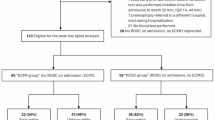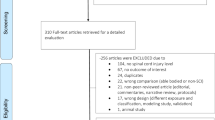Abstract
Subjects with spinal cord injury (SCI) have been shown to have an adverse lipid profile. Prior studies performed with smaller numbers of subjects have not been able to demonstrate any relationship between the level and degree of the neurological deficit and plasma lipid levels. Over a 2 year period we investigated the lipid profiles in 541 subjects from Rancho Los Amigos Medical Center, Downey, California. Subjects were grouped by tetraplegia (Tetra; n=247) or paraplegia (Para; n=294) and by subgroup for degree of neurological deficit: complete Tetra (n=156), incomplete Tetra (n=91), complete Para (n=206) and incomplete Para (n=88). The serum high-density lipoprotein (HDL) cholesterol level was lower in the Tetra than in the Para group (38±0.7 vs 45±0.8, P<0.01). The group with Tetra had a higher percentage of subjects with serum HDL cholesterol values <35 mg/dL [an independent risk factor for coronary heart disase (CHD)] than those with Para (38% vs 21%, P<0.0001). A significant inverse relationship was found for degree of neurological deficit and mean serum HDL cholesterol level (r=0.19, P<0.001), with the greater the deficit, the lower the serum HDL cholesterol level. Serum total cholesterol levels were higher in the Para group than in the Tetra group (198±2.6 vs 184±2.6, P<0.01). However, the ratio of total cholesterol to HDL cholesterol (a discriminator of risk for CHD) was significantly lower in the Para group than the Tetra group (4.8 vs 5.2%, P<0.01). Thus, in persons with SCI a spectrum of depressed serum HDL cholesterol levels and increased cardiovascular risk occur, with the most adverse lipid changes correlating with the severity of neurological deficit.
Similar content being viewed by others
Log in or create a free account to read this content
Gain free access to this article, as well as selected content from this journal and more on nature.com
or
Author information
Authors and Affiliations
Rights and permissions
About this article
Cite this article
Bauman, W., Adkins, R., Spungen, A. et al. The effect of residual neurological deficit on serum lipoproteins in individuals with chronic spinal cord injury. Spinal Cord 36, 13–17 (1998). https://doi.org/10.1038/sj.sc.3100513
Published:
Issue date:
DOI: https://doi.org/10.1038/sj.sc.3100513
Keywords
This article is cited by
-
Administration of increasing doses of gonadotropin-releasing hormone in men with spinal cord injury to investigate dysfunction of the hypothalamic–pituitary–gonadal axis
Spinal Cord (2018)
-
Nutrition education for cardiovascular disease prevention in individuals with spinal cord injuries: study protocol for a randomized controlled trial
Trials (2017)
-
Provocative stimulation of the hypothalamic–pituitary–testicular axis in men with spinal cord injury
Spinal Cord (2016)
-
Anästhesiologisches Vorgehen bei Patienten mit spinalem Querschnitt
Der Anaesthesist (2016)
-
Functional electrical stimulation after spinal cord injury: current use, therapeutic effects and future directions
Spinal Cord (2008)



